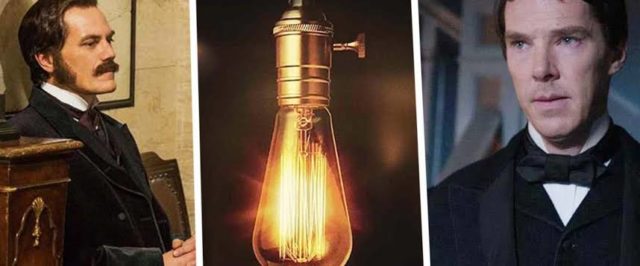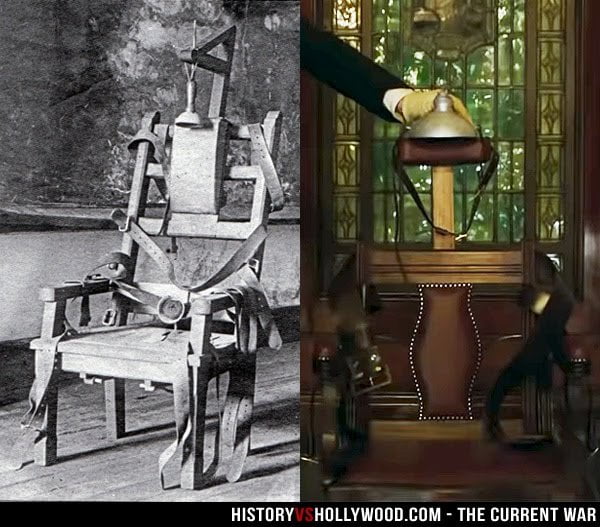Nikola Tesla and Thomas Edison are both the Godfathers of electric world. Edison invented DC current systems and Tesla invented the AC electric system. Both became immensely popular and literally power our lives today. But what about the behind the scenes?
“The Current War” starring Benedict Cumberbatch as Edison and Nicholas Hoult as Nikola Tesla was initially shelved due to the Harvey Weinstein Scandal that gave rise to the #MeToo movement. However, it has been re-released recently in October 2019.
Thomas Edison (played by Benedict Cumberbatch) is going to “enlighten” the city of Manhattan with his direct current (DC) technology, when George Westinghouse (Michael Shannon), an entrepreneur and inventor himself, introduces another ‘better’ option to the scientific community.
Here Nikola Tesla enters the scene. Although he was just a struggling individual then, with a lot of ideas he offered something more. Edison’s system might have been cheaper than the then traditional gaslight, but not as cheap as Tesla’s Aternative Current (AC) system.
The system that powers the world was not built in a day, nor was it an easy journey.

After watching the movie, I was curious how far the fiction was from facts and did some ‘research’ (read: YouTube and Google) and here’s what I found out:
Introduction of Tesla
Fiction:
Tesla is a Serbian immigrant futurist who lands a job with Edison Electric. Due to various conflicts in interests, he leaves and starts his very own company.
After lots of arguments and change of heart regarding his ideas on AC Motors, Tesla is “eccentric” and is kicked out from his very own company. He is completely broke and literally on the streets before he’s hired by Westinghouse, who is impressed by Tesla’s AC technology.
Fact:
Tesla started out with Edison and left. But the reason of his departure was never clear. Some say, it was over a bonus, or he was frustrated as none of his ideas were being put to action.
He did start a company but the investors were only interested in running an electric utility rather than manufacturing New AC motors. They left him penniless completely.
An all-out media war
Fiction:
Edison, being threatened by the up and coming AC system, publicly belittles it and its creators in various ways. Whitehouse let it pass by until those attacks became more violent and ruthless.

Fact:
True. Edison was quick to dismiss Westinghouse in the press, even went as far as personally sending letters to media, government officials and companies and cities that were interested in Westinghouse’s systems. The electric giant expressed his concerns over the “dangers” of AC.
Read More: 10 Upcoming Movies Every Millennial Should Watch
Credibility of Edison’s inventions
Fiction:
The movie shows how Edison didn’t actually ‘create’ all that is attributed to him. The reason a lot of inventions were attributed to his name was because he bought the patent from the creator and perfected the invention. This begs the question whether Edison was really the genius everyone thought him to be.
Fact:
This is true to some extent. Despite being credited as the ‘inventor’ of the Phonograph, incandescent Light bulb and maybe Motion pictures, he didn’t really invent it. Just like the case with the light bulb, he can be credited with making the bulb commercially available.
The Electric Chair
Fiction:
Edison is pursued by Harold P Brown, a fellow engineer to develop the electric chair. Edison refuses because of his ethics but recognizes the potential to pin the invention on Westinghouse, as far as paying almost $100k in legal fees for Kemmler so that he could appeal his sentence to the Supreme Court.
Edison cared more about demonizing Westinghouse’s AC (alternating current) systems than he did about saving a murderer’s life.

Fact:
This is mostly true. Dentist Alfred P Southwick saw a man get electrocuted and as horrifying as that sounds he found this to be more “humane” than other execution methods.
He approached Edison but he didn’t want his DC system to be associated with matters of death, so he directed Southwick towards Westinghouse-Tesla’s AC current system, believing if the electric chair was associated with AC current, he could damage the reputation of it by demonstrating that they were unsafe and horrifying.
He was successful in doing so because the death itself was botched and terrifying to watch. Witnesses gasped, fainted, and vomitted at what they saw and smelled. AC current was publicised as “dangerous and inhumane.”
A disgusted Edison commented, “They could have done a better job with an axe,” likely referring to the weapon Kemmler had used to butcher his wife. Edison even came up with the term ‘Westinghoused’ to describe someone dying from electrocution via AC current.
But eventually Edison’s push for DC had started to fade in the face of decline in profits. He had to merge with Thomson-Houston company in 1892 to become General Electric (GE), a more AC-friendly company.
Later, Edison began to put his focus into other projects (like motion pictures) backing off from his agenda to destroy the reputation of Westinghouse’s AC current. In 1893, Westinghouse won the contract to bring power (and in turn light) to the Chicago World’s Fair ending the Current War once and for all.
For theatrical purposes, the movie elevated some of the scenes and incidents, even vilifying Edison to some extent. But nonetheless, with an ensemble cast, an amazing screenplay and exquisite visuals, “The Current War” sheds light on an age-old rivalry of two geniuses that was slowly fading away from the minds of youngsters.
Images – Google Images
Sources – Times of India, CNN
Find the blogger – @RoyDelancy































